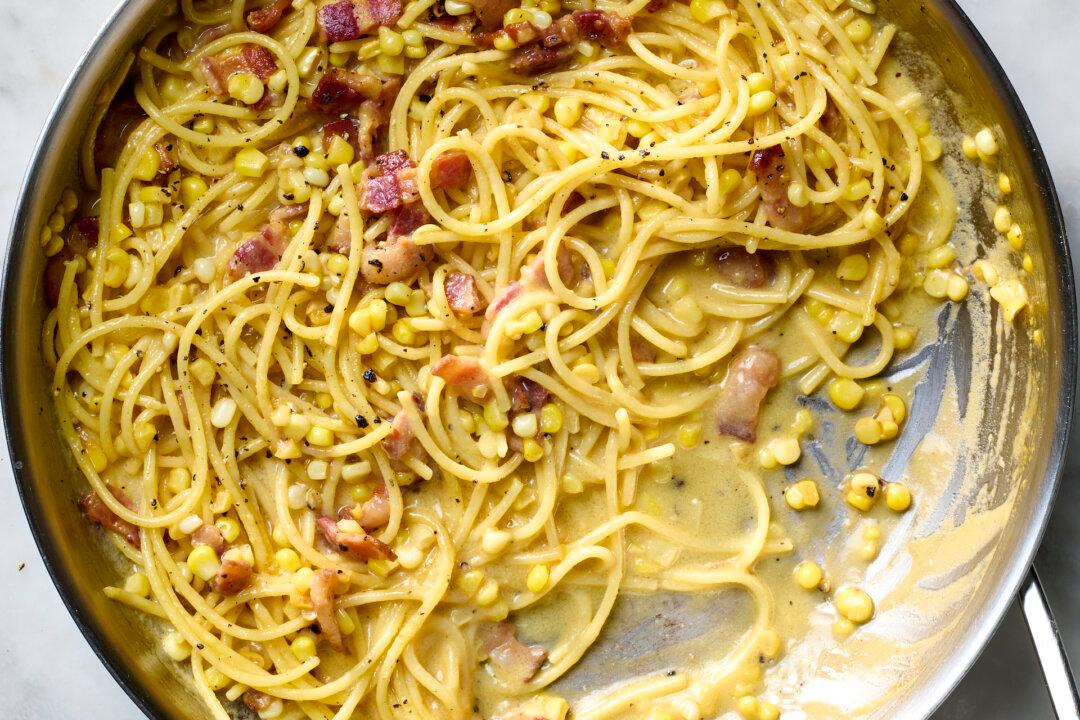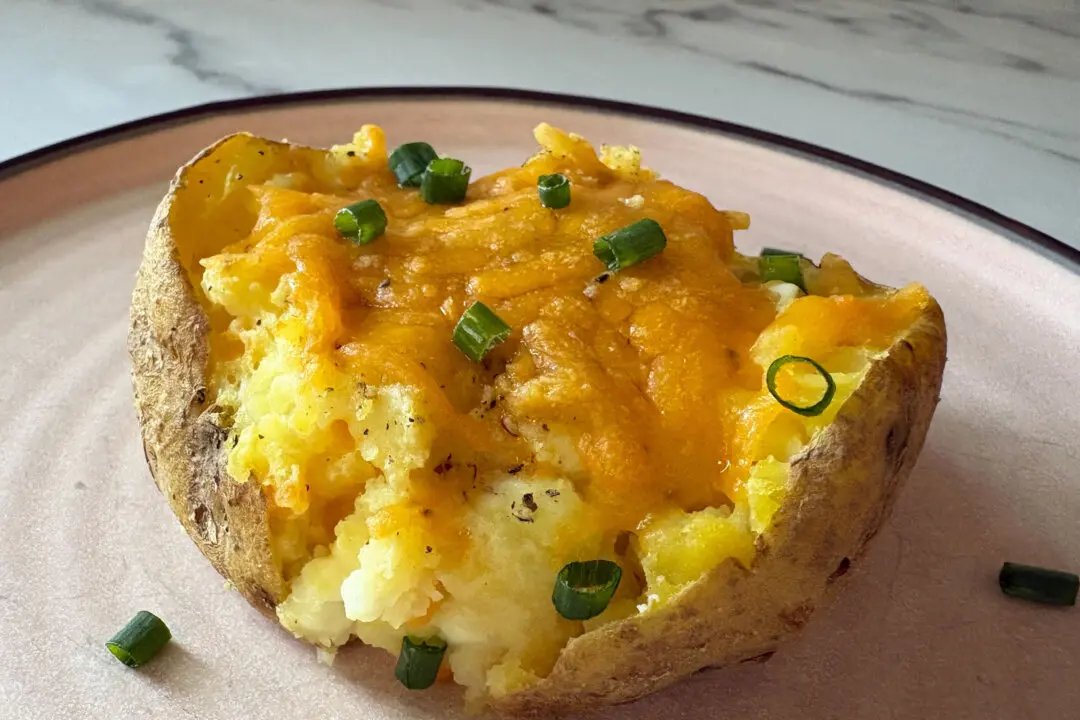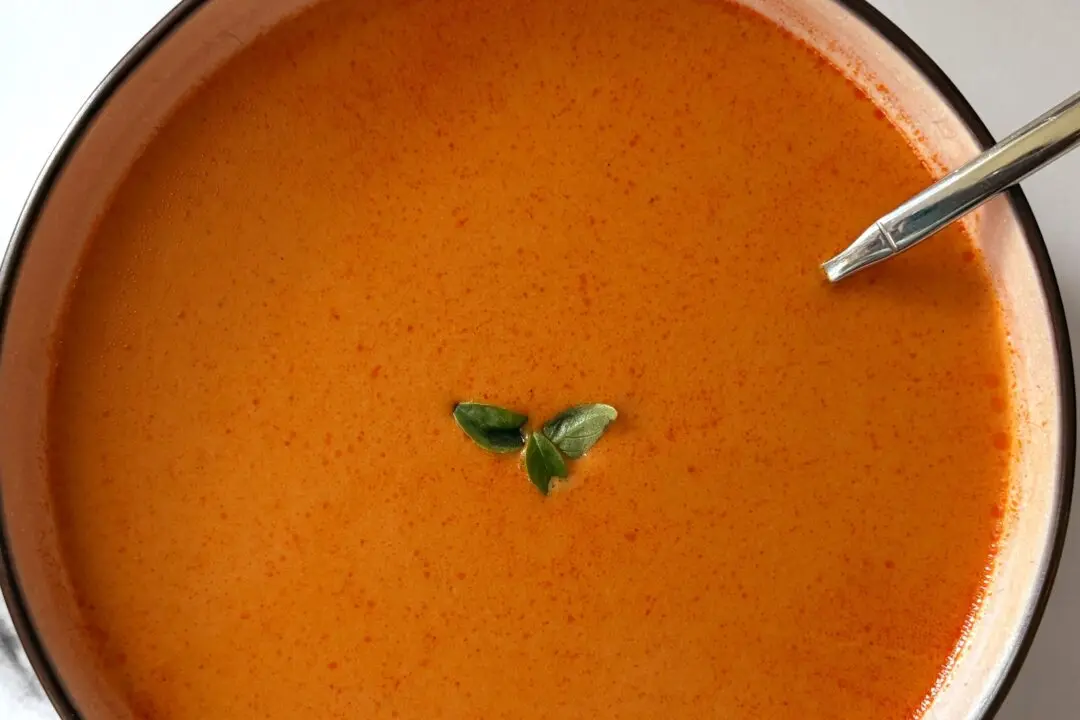Riffs on the classic spaghetti carbonara are nothing new. Its simplicity makes it ideal for creative twists. You could make gochujang carbonara spiked with sweet heat, melty cabbage pasta carbonara with tangles of caramelized cabbage, or even baked spaghetti squash carbonara. If all these flavors work well, why not use carbonara to celebrate seasonal produce?
For me, summer is all about fresh corn, so I couldn’t resist creating a corn carbonara. In this recipe, fresh corn adds a subtle sweetness that contrasts against the sharp cheese and salty bacon. It’s a twist on carbonara that’s bound to become a summertime staple.
Why You’ll Love It
- This pasta is exploding with corn flavor. Corn on the cob is an incredible ingredient because in addition to its crisp, sweet kernels, the cob is rife with starchy juices and an abundance of hidden flavor. It would be a crime to let any of that corn goodness go to waste, so this recipe uses corn in three ways to boost its presence.
- The “corn broth” is life-changing. Here, I share an easy technique for making a quick broth with the corn cobs that can be used to transform a multitude of recipes. Try it as the base for soup, as the liquid for cooking grains, or for making risotto.
Key Ingredients in Corn Carbonara
- Corn: Corn is infused into this pasta in three different ways and is perfect for when fresh corn on the cob is in season. Yellow, white, or bicolor corn all work. Look for large ears with big, plump kernels that offer a juicy crunch against the salty bacon.
- Spaghetti: Dry spaghetti offers the best size and texture against the bits of corn and bacon. Fresh pasta or thin angel hair is too delicate to withstand the vigorous tossing when adding the egg and cheese mixture.
- Bacon: Using thick-cut or center-cut bacon allows the rendered pieces of bacon to stay meaty and a little toothsome. Choosing a bacon that is applewood or hickory smoked will have a bolder flavor, but will work just as well.
- Eggs: No need to separate eggs for this carbonara. The starchy, smooth corn puree offers the same slippery richness as extra egg yolks that many recipes include while adding even more corn flavor.
- Pecorino Romano: This salty sheep’s milk cheese is what’s used in traditional carbonara, and the strong flavor offers a great counterpoint to the sweet corn. For the best texture, get a block of Pecorino Romano from Italy, and grate it fresh before using.
- Parmesan: The nutty flavor of Parmesan is sweeter and milder than Pecorino, so adding some in this recipe boosts the cheesy taste without overshadowing the corn. Look for a block of Italian Parmesan for the best texture.
- Coarsely ground black pepper: Grind your peppercorns fresh and avoid pre-ground containers, which can be dusty and harsh. Toasting the pepper in the hot bacon drippings enhances and deepens its flavor.
Helpful Swaps
- To use frozen corn instead of fresh, you need frozen ears of mini corn on the cob and frozen corn kernels. Boil 4 mini ears of corn in place of the cobs. Remove to a cutting board, cool slightly, and cut off the kernels (about 1 cup); blend these kernels for the puree. Add 1 cup of thawed corn kernels to the crisped bacon.
- While spaghetti has the perfect thickness for this pasta, you can swap in other long noodles like linguine or bucatini.
- For a less smoky flavor, you can swap the bacon for pancetta or opt for traditional guanciale. Either one may be saltier or more peppery than bacon, so make sure to taste your pasta before adding any final seasoning.





